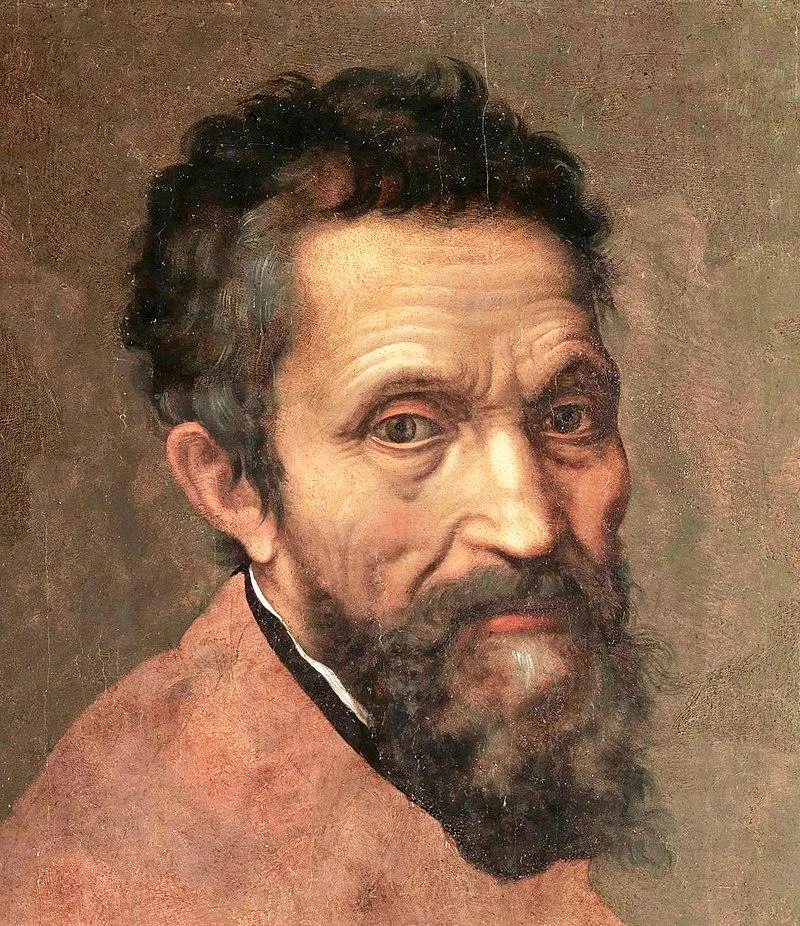Art Historian Says He Has Identified the Earliest Known Michelangelo Drawing
The sketch, now on view in Budapest, likely dates to between 1487 and 1490
:focal(330x155:331x156)/https://tf-cmsv2-smithsonianmag-media.s3.amazonaws.com/filer/c1/b6/c1b6618c-2a3c-4a7d-a646-f82637d1e2c1/d7hftxdivxxvmcloudfront-695x1024_copy.jpg)
Days before his death in 1564, Michelangelo torched the majority of his extant drawings and papers in two separate bonfires. This wasn’t the first time the notorious perfectionist had sought to erase all evidence of his preparatory works: According to popular lore, he also burned all of the drawings, or cartoons, left in his Rome home prior to moving to Florence in 1518. As biographer Giorgio Vasari once posited, the Renaissance giant hoped “that no one might see the labours endured by him and his methods of trying his genius, [so] that he might not appear less than perfect”; at the same time, Michelangelo likely wanted to discourage would-be copycats from stealing his ideas.
It’s all the more impressive, then, that a pen drawing believed to be created by the artist on the cusp of adolescence survives to this day. Timothy Clifford, a prominent Italian Renaissance scholar, contends that “The Seated Man,” a 1487 to 1490 sketch currently on view at the Museum of Fine Arts in Budapest, was made by a 12- or 13-year-old Michelangelo, who was newly apprenticed in the studio of painter Domenico Ghirlandaio.
The Telegraph’s Dalya Alberge reports that Clifford, a leading Michelangelo expert and the former director of the National Galleries of Scotland, learned of the drawing’s existence after its owner, an anonymous British collector who acquired it at a 1989 auction, contacted him on the advice of art historian Miles Chappell. As Clifford says to Alberge, he immediately thought the piece—which depicts a toga-clad figure, based on a sculpture of Jupiter from classical antiquity, perched on a throne while holding a scepter—was “very likely” an authentic Michelangelo.
“He uses two different varieties of brown ink,” Clifford explains. “He has an idiosyncratic way of drawing, with rounded chins and a very hard line under the nose, which also appears in a slightly later drawing. No other Ghirlandaio pupil draws like that.”
According to Alberge, the sketch’s dating stems from comparisons with two other works of Michelangelo juvenilia. These drawings, in the style of early Renaissance artists Giotto and Masaccio, are slightly more advanced and can therefore be dated to a year or so after “The Seated Man.”

Although the ink drawing dates to Michelangelo’s early years, the level of sophistication evident in its shading means it could plausibly pass for a work by an established artist of the period.
“But there’s something about it that just gives the game away,” Clifford adds. “It’s a fascinating object.”
“The Seated Man” is one of the highlights of Triumph of the Body: Michelangelo and Sixteenth-Century Italian Draughtsmanship, an exhibition on view through June 30. As the Musem of Fine Arts, Budapest's website states, the display features 80 drawings by Michelangelo and his contemporaries, including such luminaries as Leonardo da Vinci, Raphael and Luca Signorelli. Twenty-nine nude figure studies ranging from “rapidly sketched ideas to detailed, highly finished cartoons” form the center of the exhibition.
Zoltán Kárpáti, exhibition curator, tells Alberge (for a separate Daily Mail article) that “The Seated Man”’s survival is doubly impressive considering the facts that “study drawings by apprentices were only rarely preserved” and Michelangelo had a strong penchant for destroying his own work.
Michelangelo scholar Paul Joannides suggests the work may have been made even before the young artist began working with Ghirlandaio. “Might this chance survival have been made at the beginning of his apprenticeship? Or even before?” he asks in the Triumph of the Body catalogue.
The early sketch isn’t the only purported Michelangelo drawing rediscovered in recent years. Clifford himself has already made at least one similar find: Back in 2002, the art historian found a chalk drawing of a candelabrum at New York’s Cooper Hewitt, Smithsonian Design Museum. As Clifford told The New York Times’ Michael Kimmelman and Paul Jeromack in the aftermath of the discovery, he was able to identify the sketch as a Michelangelo “just as I recognize a friend in the street or my wife across the breakfast table.”
/https://tf-cmsv2-smithsonianmag-media.s3.amazonaws.com/accounts/headshot/mellon.png)
/https://tf-cmsv2-smithsonianmag-media.s3.amazonaws.com/accounts/headshot/mellon.png)